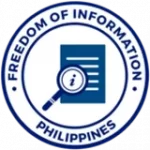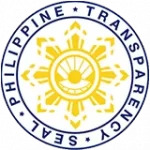𝗕𝗨𝗧 𝗔 𝗣𝗥𝗜𝗩𝗜𝗟𝗘𝗚𝗘 𝗙𝗢𝗥 𝗧𝗛𝗘 𝗠𝗜𝗡𝗢𝗥𝗜𝗧𝗬
The Ministry of Social Services and Development (MSSD) joins the Philippine nation in celebrating the 𝟯𝟲𝘁𝗵 𝗔𝗻𝗻𝗶𝘃𝗲𝗿𝘀𝗮𝗿𝘆 𝗼𝗳 𝘁𝗵𝗲 𝗣𝗲𝗼𝗽𝗹𝗲 𝗣𝗼𝘄𝗲𝗿 𝗥𝗲𝘃𝗼𝗹𝘂𝘁𝗶𝗼𝗻 that marked the end of over 20 years regime of the former dictator President Ferdinand Marcos and the opening-up of democratic space that could pave the way for the restoration of democratic rule in the country.
As we commemorate this remarkable day, we highlight the significance of the end of martial law during the 70’s and 80’s in the context of Bangsamoros’ struggle and fight for self-determination particularly relating to the numerous abuses and atrocities committed against the Moros that play huge part on what and where the Bangsamoro Government is today.
𝗝𝗔𝗕𝗜𝗗𝗔𝗛 𝗠𝗔𝗦𝗦𝗔𝗖𝗥𝗘. In this dreadful carnage, the former President Marcos ordered the government armed forces the recruitment of around 200 young Tausug and Samah men to be deployed in Sabah, Malaysia for the purpose of Philippines’ geographical expansion in a failed attempt to infiltrate and reclaim the island.
The recruits were brought to a military training camp in Corregidor Island, Cavite City which is faraway from their Bangsamoro homeland. They were promised to get paid and be part of the armed forces.
Upon exposing the masterplan about the secret mission against their fellow Muslim brethren in Sabah, the Moro recruits defied the orders and demanded for their return which led to their brutal execution on March 18, 1968 in the camp.
One survivor named Jibil Arula managed to escape after hearing gunshots and finding out about the fatal destiny of his comrades who were taken from their barracks by batch. Arula sprinted, jumped off the cliff, swam in the sea, and reached the shores Cavite.
Fortunate enough, Arula was able expose the incident and the secret operation not only to the whole country but to the world which caught the attention and sparked outrage from the young Moros from the different universities that time which later gave birth to the Moro National Liberation Front (MNLF).
𝗠𝗔𝗡𝗜𝗟𝗜 𝗠𝗔𝗦𝗦𝗔𝗖𝗥𝗘. On June 19, 1971, the joint forces of the armed men associated to the Philippine Constabulary and Ilagas opened fire in a masjid and a school in Manili, Carmen, North Cotabato resulted to the slaughter of more than 70 Moros including women and children who were gathered by force.
The atrocious Manili incident made noise in the international scene which drew the attention of several Islamic countries and worldwide media that time.
Prior to the massacre, Manili was a small village inhabited mostly by farmers where Moros and Christians lived harmoniously. The Marcos regime started recruiting people from the groups of the latter and used them in the para-military operations. This incident precipitated indignation and division between the two (2) groups whom once coexisted peacefully in the community.
𝗧𝗔𝗖𝗨𝗕 𝗠𝗔𝗦𝗦𝗔𝗖𝗥𝗘. On November 22, 1971, a group of unarmed Maranao civilians were aboard five (5) truckloads heading back to their homes were stopped and surrounded by uniformed personnel at a military checkpoint in Brgy. Tacub, Kauswagan, Lanao del Norte. They were asked to get off the trucks and were fired upon causing the death of at least 40 passengers.
There were claims from the witnesses in the community that Ilagas, a para-military group were also involved since their presence were seen during the barbaric incident.
𝗠𝗔𝗟𝗜𝗦𝗕𝗢𝗡𝗚 𝗠𝗔𝗦𝗦𝗔𝗖𝗥𝗘. Also known as the Palimbang Massacre, members of then Philippine Constabulary began the killings of more than 1, 500 Maguindanaon men on September 24, 1974 Barangay Malisbong, Palimbang, Sultan Kudarat.
In a report from the Moro Women’s Center, the male victims were aged 11 to 70 years old and were slaughtered by batch inside the Tacbil mosque of Malisbong.
An estimate of 3,000 Moro women and children were detained and taken to the naval ship anchored offshore. The government forces ruined and burned nearly 300 houses in the said coastal village.
𝗕𝗨𝗥𝗡𝗜𝗡𝗚 𝗢𝗙 𝗝𝗢𝗟𝗢. Military forces under the former dictator Ferdinand Marcos launched both massive aerial and naval bombings against the Moro National Liberation Front (MNLF) members in Jolo, Sulu on February 7, 1974 which devastated the town resulting to the deaths of more than 300 Tausugs and displacement of 40, 000 residents.
Testimonials about this 7-day tragic incident can still be heard from the living survivors and were also documented during sharing sessions with them.
𝗕𝗜𝗡𝗚𝗖𝗨𝗟 𝗩𝗜𝗟𝗟𝗔𝗚𝗘 𝗠𝗔𝗦𝗦𝗔𝗖𝗥𝗘. Uniformed armed men who were believed to be a state-organized para-military unit arrived in Bingcul Village in Mindanao on November 12, 1977 wherein 42 villagers who were members of 12 Moro families were shot to death after being dragged out of their homes and ordered to squat. The perpetrators opened fire on them and burned their houses.
Only four (4) people including three (3) children managed to survive by escaping to the bushes. The said survivors testified during the National Bureau of Investigation’s (NBI) conduct of two-year investigation about the incident. Based on the investigation findings, the operation was an attempt to help crack down on rebellion in Mindanao. Murder charges were recommended by NBI to be filed against the armed men.
All these documented atrocities are just some of the many incidents of violence and brutality that carved in the centuries-old Bangsamoro struggle for freedom, peace and justice. To this day, this fight for justice of the Bangsamoro continues.
𝗘𝗗𝗦𝗔 𝗣𝗲𝗼𝗽𝗹𝗲 𝗣𝗼𝘄𝗲𝗿 𝗥𝗲𝘃𝗼𝗹𝘂𝘁𝗶𝗼𝗻 was not only a major milestone for the people in Metro Manila or Luzon who participated the historical public protest. For every Bangsamoro, the triumph of People Power that EDSA symbolized paved the way for subsequent efforts to recognize the Bangsamoro struggles through the years and to give the Bangsamoro people the democratic space to peacefully demand for justice and democracy for themselves and for generations to come.
We believe that the Bangsamoros as part of the minority sectors of the country may be in an advantageous position to be in a democratic state. To quote the political journalist and moral philosopher, Albert Camus: “Democracy is not the law of the majority but the protection of the minority”.
ONLINE SOURCES:
https://www.aljazeera.com/features/2013/3/18/remembering-the-jabidah-massacre
https://bangsamoro.gov.ph/news/latest-news/remembering-jabidah-and-the-seeds-of-the-struggle/
https://www.cnnphilippines.com/life/culture/2018/03/21/operation-merdeka-50-years-later.html
https://www.rappler.com/newsbreak/fact-check/212458-false-no-massacres-during-martial-law/
https://www.rappler.com/newsbreak/24025-jabidah-massacre-merdeka-sabah/
https://www.rappler.com/voices/imho/137701-manili-massacre-remember/
https://www.rappler.com/nation/zamboanga-city-mayor-isabelle-climaco-says-family-victim-marcos-regime/
https://news.abs-cbn.com/blogs/opinions/10/06/16/opinion-before-martial-law-there-was-the-tacub-massacre
https://newslab.philstar.com/31-years-of-amnesia/jabidah
https://www.msuiit.edu.ph/faculty-staff/article-detail.php?no=425&s=66ec01099881cf773015811c4a584ff0
http://penpointers.blogspot.com/2006/11/tacub-massacre-revisited.html
https://www.tjrc.ph/?fbclid=IwAR18UyCUWypFFN1ROMkWX07kIb6myb8AmMzRK6sjCshwt7_RgwgqvEJmLn4
https://uca.edu/politicalscience/dadm-project/asiapacific-region/philippinesmoro-national-liberation-front-1968-present/
PUBLISHED BOOKS AND JOURNALS:
Muslim, Macapado A. (2017). The Moro Armed Struggle in the Philippines: The Nonviolent Autonomy Alternative
Ragandang, Primitivo C. III (2018). Factors of century-old conflict and current violent extremism in the South


